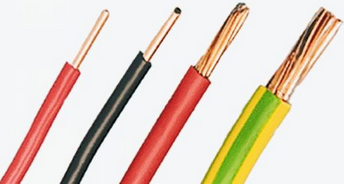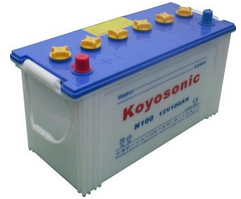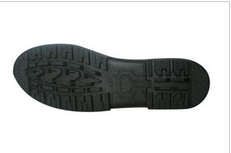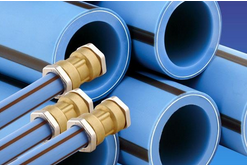Characteristics of plastics
Synthetic Fibre of Class 8
- Do not corrode easily
- Light in weight
- Strong
- Durable
The characteristic properties of Plastics:
- Plastic is non-reactive: We know that metals like iron get rusted when left exposed to moisture and air. But plastics do not react with water and air. They are not corroded easily. That is why they are used to store various kinds of material, including many chemicals.
- Plastic is light, strong and durable: Since plastic is very light, strong, and durable and can be molded into different shapes and sizes, it is used for various purposes. Plastics are generally cheaper than metals. They are widely used in industry and for household articles.
- Plastics are poor conductors: Plastics are poor conductors of heat and electricity. That is why electrical wires have plastic covering, and handles of screw drivers are made of plastic.
- Toughness of tensile strength: Synthetic plastics can withstand a lot of force without getting broken. For example, a thread of synthetic plastic can withstand a lot of weight as compared to a thread of cotton of same thickness
- Weather resistance: Synthetic plastics are not biodegradable, i.e., they do not weather unlike natural plastics, such as cotton and wool.
- Appearance: Synthetic plastic materials can be made as transparent as glass. F urthermore, they can be made in any desired colour or texture and can be used for making a large variety of household products.
Raw Materials for Synthetic Plastics:
Petroleum products, such as ethene, propene, benzene, toluene, etc, are the raw materials for the synthetic plastics. These materials are either directly polymerised or first converted into suitable monomers chemically and then polymerised to form synthetic plastics.
CLASSIFICATION OF SYNTHETIC PLASTICS
Synthetic plastics are classified under the following heads:
- Thermoplastics
- Thermosetting plastics.
|
S. No. |
THERMOPLASTICS |
THERMOSETTING PLASTICS |
|
1.
|
Thermoplastics are such synthetic plastics in which materials are obtained by gently heating and then moulding.The moulded materials can be reused by softening on gentle heating and then giving them a new shape. |
Thermosetting plastics are such synthetic plastics in which materials are obtained by gently heating and then moulding.However, the moulded materials cannot be remoulded again and again by gently heating. Thus, they are plastics for one time use and the moulding is permanent in nature. |
|
2.
|
All plastics are polymers of simple molecules (monomers). However, the arrangement of simple molecules in a polymer is not of the same type. These are the plastics in which monomers are arranged in a straight line chain. Such plastics are said to have linear arrangement of molecules. |
In these plastics the monomers are cross- linked. Such plastics are said to have cross- link arrangement. |
|
3.
|
Polythene, polyvinyl chloride (PVC), polystyrene, nylon and terylene are the examples of thermoplastics. |
Bakelite, urea, formaldehyde, polyurethane and melamine are the examples of thermosetting plastics. They are used for making cabinets of radio, television, telephone sets, water tanks, water pipes, electric switches, cups plates, dinner sets, etc. |
POLYETHENE:
It is prepared by the polymerisation ofethene gas (CH2 = CH2) which is a petroleum product. It is insoluble in all kind of solvents and is not attacked by strong chemicals. Furthermore, it is not biodegradable.


Insulated wires Carrying Bag
Uses:
- It is used for making thin films which are used for making carry bags, adhesive tapes, etc.
- It is used for making kitchen and laboratory ware, such as cups and bottles.
- It is used as insulation for electric wires.
- It is used as anti-corrosion coating on the articles made from iron or copper.
POLY PROPENE:
It is prepared by the polymerisation ofpropene gas ( ) molecules.
) molecules.


Collapsible Toys Automobile Batteries
Uses:
- It is used for making ropes, packaging materials and containers.
- It is used for making synthetic carpets.
- It is used for making the body of automobile batteries.
- It is used for making collapsible toys.
POLY VINYL CHLORIDE:
It is prepared by the polymerisation ofvinyl chloride molecules.
.png)


Rain CoatSoles of Shoes Water Pipes
Uses:
- It is used for making hand bags, raincoats, etc.
- It is used for making decorative vinyl flooring.
- It is used for making soles of shoes.
- It is used for making gramophone records.
- It is used for making water pipes, water tanks and sanitary fittings.
- It is used as superior insulation of electric wires.
TEFLON
|
It is prepared by the polymerisation oftetra fluoroethene molecules. It is unaffected by heat and chemicals. USES
|
|
POLYSTYRENE:
It is a lighter polymer than polyethene. It can be easily moulded on heating. When air is blown through molten polystyrene, it forms a very light foam, which is an excellent insulating and packaging material.
Uses:
- It is commonly employed in insulating refrigerators and cold stores.
- It is used for making containers, which are used as ice box.
- It is used for packaging expensive items, such as cell phones, TV, etc.
- The interior parts of a car like the dash board, and some parts of helicopters and aeroplanes are made of plastic.
- Used in the making of computer parts, circuit boards, food processors, shavers and hair dryers.











